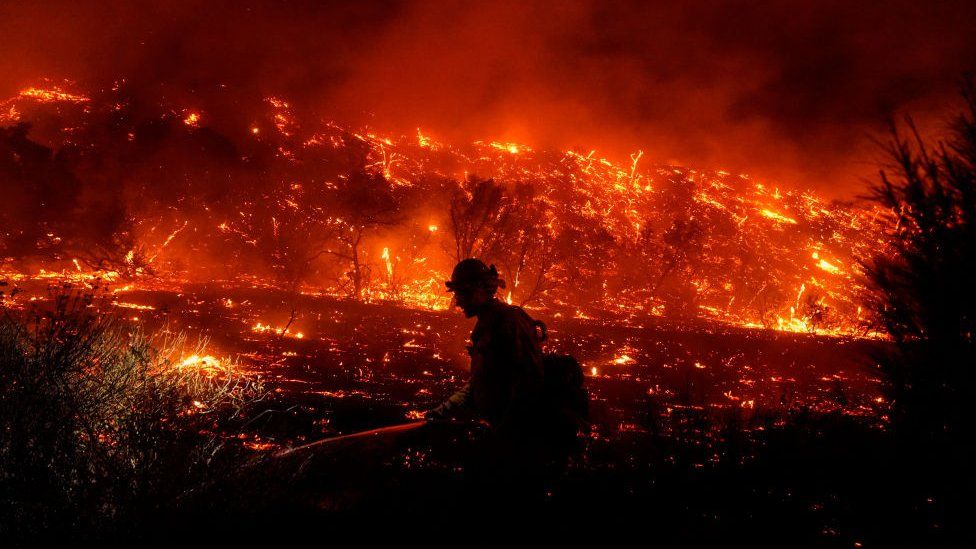
After record temperatures, western parts of the US and Canada are bracing themselves for the annual wildfire season.
There are warnings that this season could be another highly destructive one, so we've looked at why that might be.
Potential for wildfires 'sky-high'
Experts told us the potential for a record-breaking wildfire season is significant.
Dr Mike Flannigan, professor of wildland fires at the University of Alberta, said that fires need three ingredients:
- vegetation or fuel
- ignition (caused by humans or lightning)
- hot, dry and windy weather
Dr Flannigan added: "It really depends on the day-to-day weather, but the potential is sky-high for parts of Canada and the American west as they are in a multi-year drought. "
The US drought monitor - a partnership between the Department of Agriculture and other expert organisations - says half the nation is under some form of drought, with the most severe in western states.
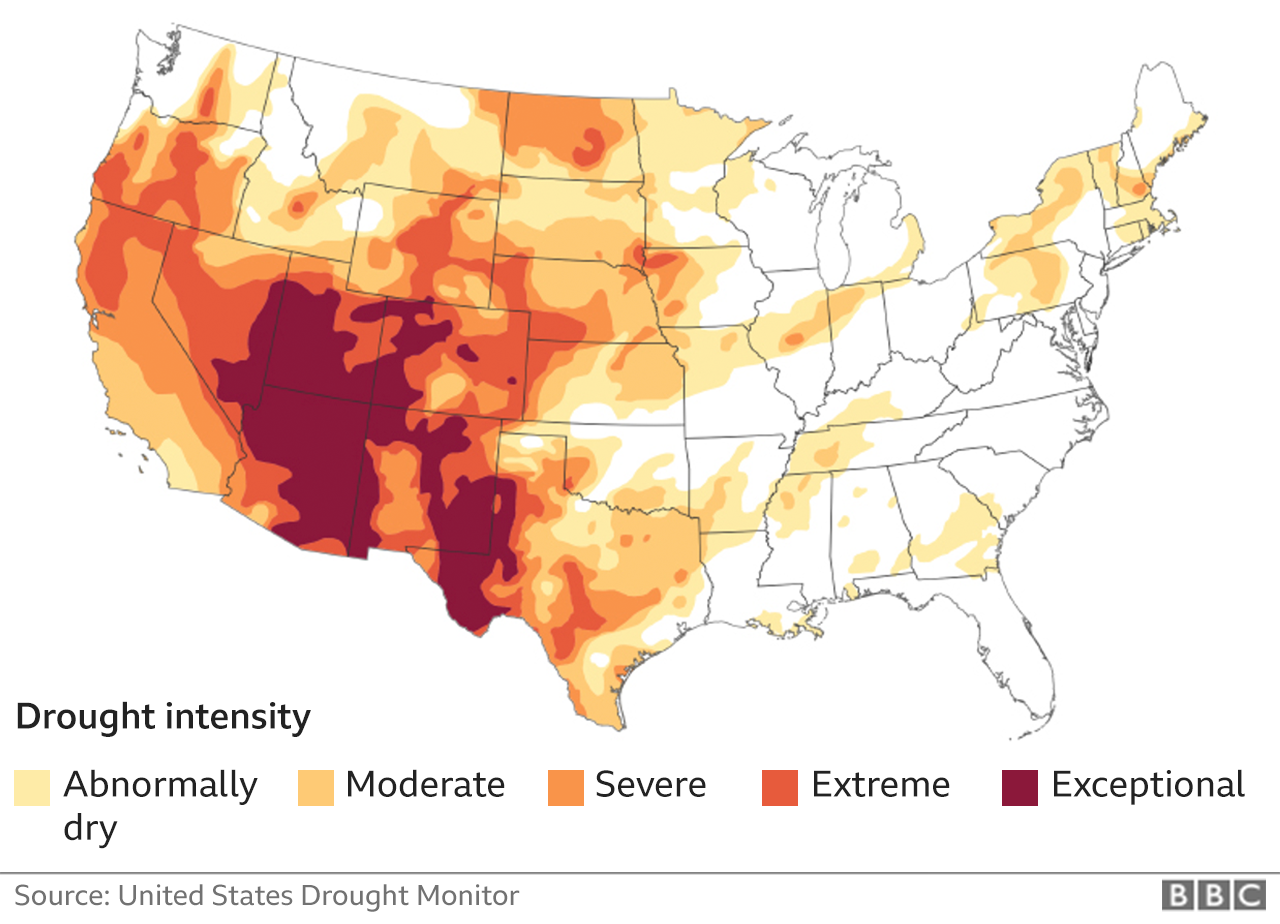
In June this year, parts of western Canada recorded their highest-ever temperatures.
The village of Lytton in British Columbia (BC) province made headlines after it reported Canada's record temperature of 49.6C.
This set off a series of wildfires, which puts the amount of land burnt in the region way ahead of the average for this time of year.
Western US states are also experiencing soaring temperatures and wildfires.
Another concern is the lack of compressed and hardened snow in mountainous areas this year because of higher temperatures. This usually acts as a barrier to burning, and alleviates drought conditions.
Dr Susan Prichard, from the School of Environmental and Forest Sciences at the University of Washington, says: "That means that vegetation from low to high elevations is more predisposed to burning."
The fire season normally starts in the south-west of the US, in states such as Arizona where there are several active large fires currently burning, according to a national fire database.
Later in the summer, fires spark further north in California and then in Oregon and Washington.
However, there are signs that the US fire season has started early, says Dr Prichard.
What do the fires look like so far?
In Arizona, the total acreage burned this year has already surpassed 2019 and 2018. Last year saw the biggest area burned for a decade (with the exception of 2011).
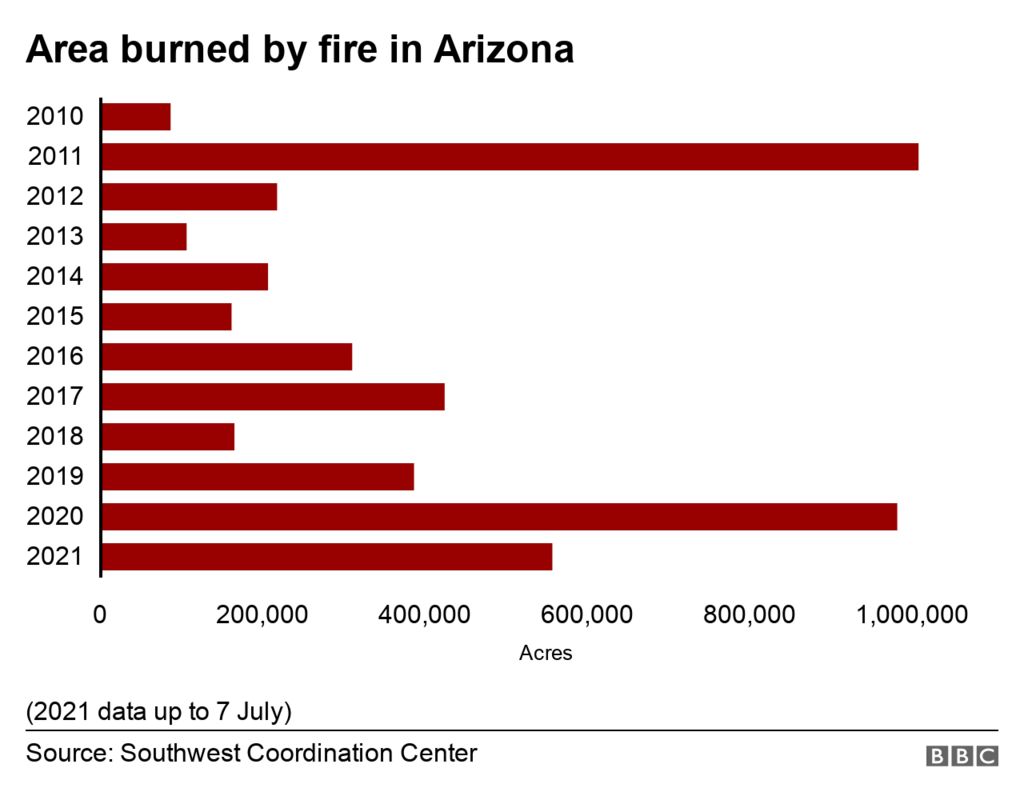
"Fires are already starting in northern California, and conditions are tinder dry in eastern Oregon and Washington as well," Dr Pritchard added.
In California, 42,400 more acres burned so far this year compared with the same period in 2020, according to estimates published by Cal Fire (California Department of Forestry and Fire Protection).
Last year, more than four million acres burned in California - a record for the state.
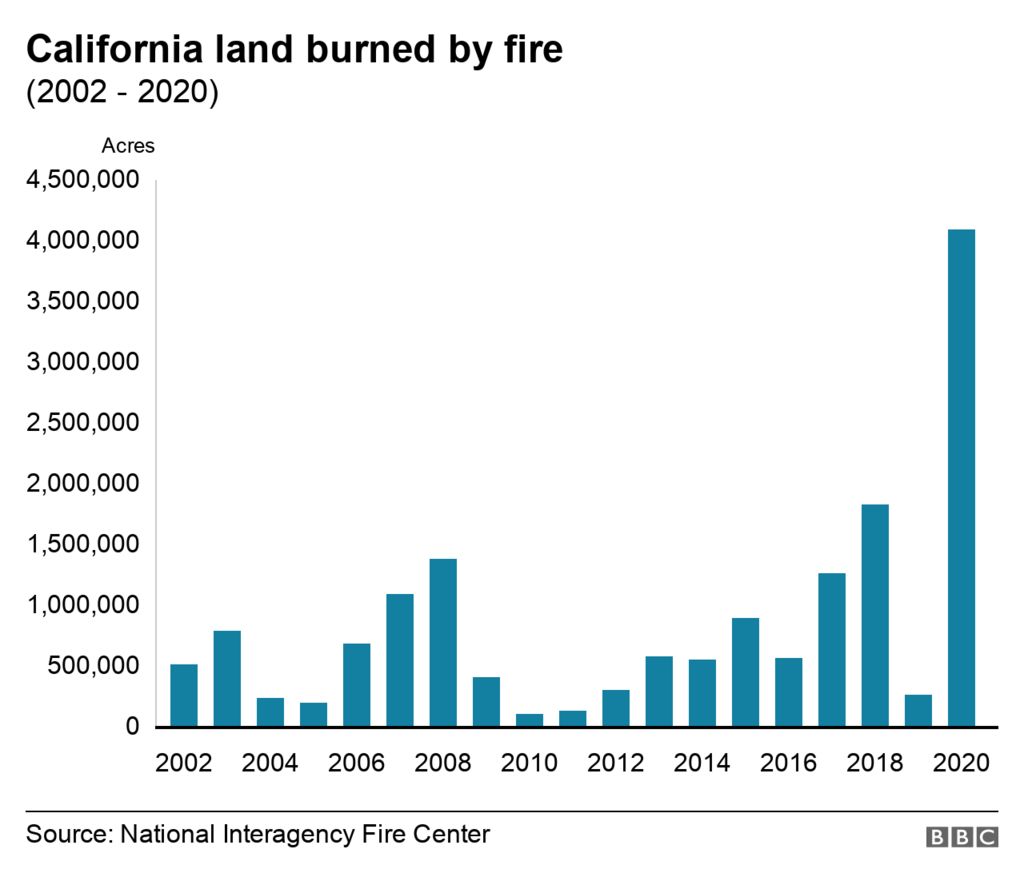
Dr Prichard says: "So far, we don't have the huge conflagrations that we had along the west coast (in the US) last summer, but it's very early in what is looking like an exceptionally dry and long fire season."
Year-on-year, the amount of land burned fluctuates considerably, but the trend across the US has been upwards since reliable data was first recorded in the 1980s.
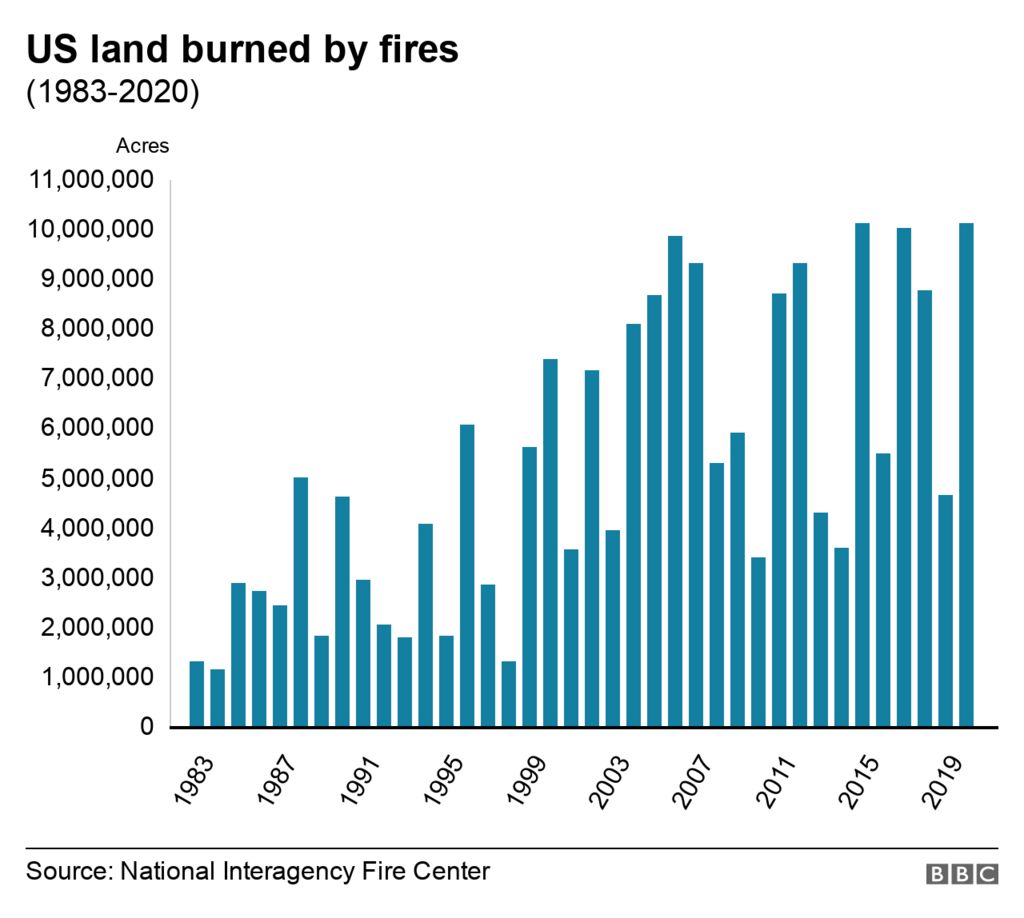
About 1.8 million acres have burnt this year, already more than was recorded in the same period last year. But this is below the 10-year average of 2.8 million acres.
In Canada, there are large year-to-year fluctuations for the amount of land burnt, but research has shown the 10-year rolling average over the last decade is more than double what it was in the 1970s.
Dr Flannigan says: "If you do a 10-year running average, the annual area burned is about one million or just over in the late 60s and early 70s and today it is about 2.6 million hectares."
The total area burned across Canada at this stage in the 2021 fire season so far is below the the 10-year average - but in British Columbia, fires have already burned more than 90,000 hectares, which far exceeds the average for that province.
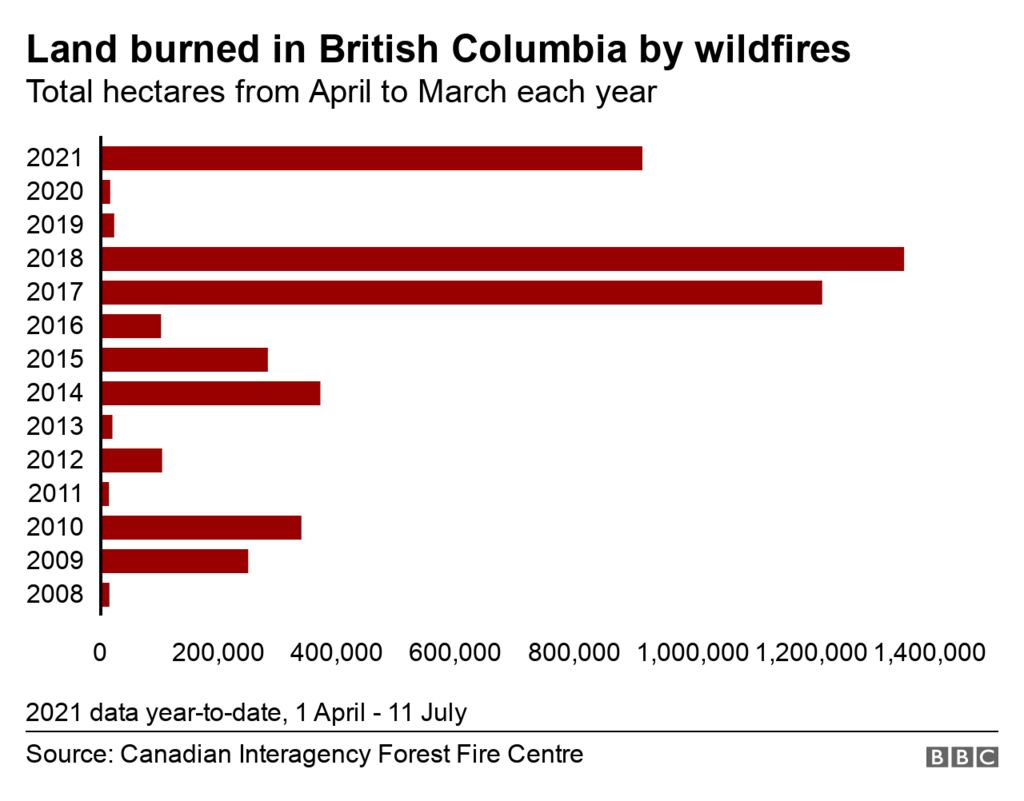
"For BC, typically their fire season starts mid-later July, and includes August and early September, so this is really early to have fires of this size and intensity," says Dr Flannigan.
Is climate change leading to more fires?
In the western US and Canada, lightning rather than human activity is increasingly the main immediate cause of wildfires.
Scientists believe that climate change is a factor contributing to more intense, and longer-lasting wildfire seasons because of warmer, drier conditions.
Dr Flannigan says: "Warm temperatures means more lightning, longer fire seasons and drier fuel, so on average we are going to see a lot more fire, and we are going to have to learn to live with fire."
Linking any single event to global warming is complicated - but a study by climate researchers said the heat that scorched western Canada and the US at the end of June was "virtually impossible" without climate change.
Reporting by Jack Goodman and Jake Horton


U.S. - Latest - Google News
July 13, 2021 at 07:08AM
https://ift.tt/3wHt6ru
US heatwave: Could US and Canada see the worst wildfires yet? - BBC News
U.S. - Latest - Google News
https://ift.tt/2ShjtvN
Shoes Man Tutorial
Pos News Update
Meme Update
Korean Entertainment News
Japan News Update
Bagikan Berita Ini















0 Response to "US heatwave: Could US and Canada see the worst wildfires yet? - BBC News"
Post a Comment